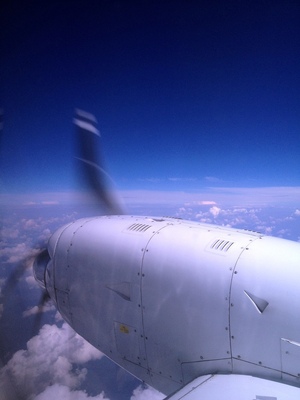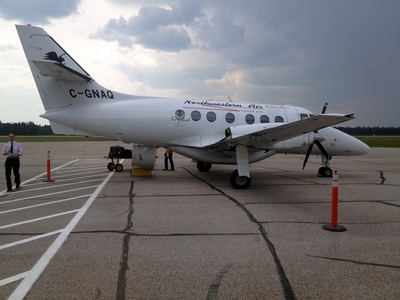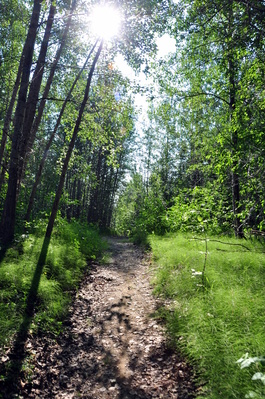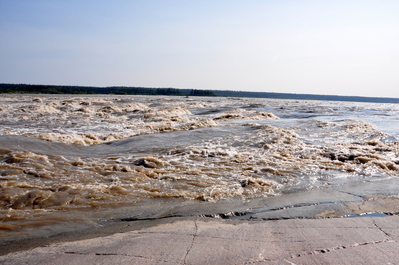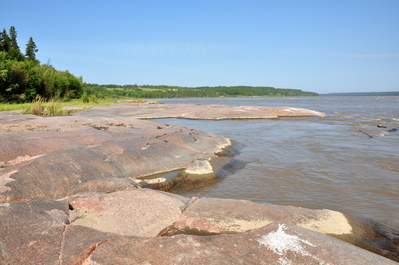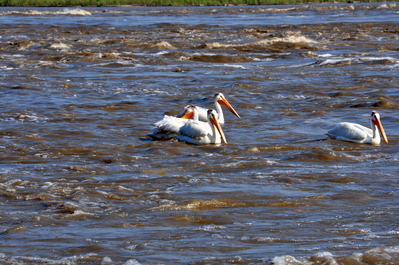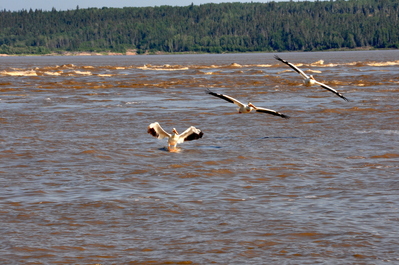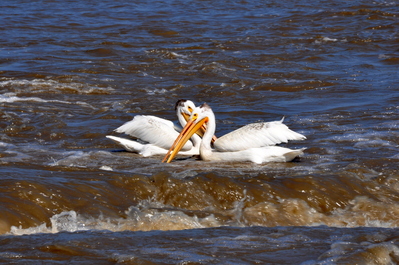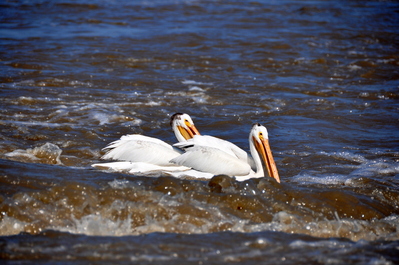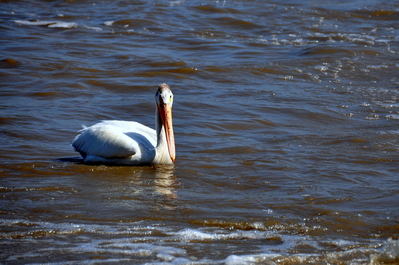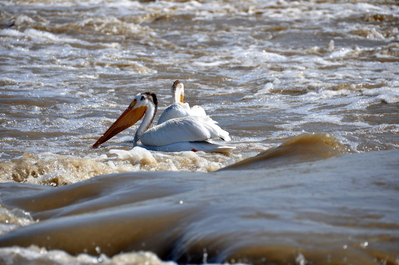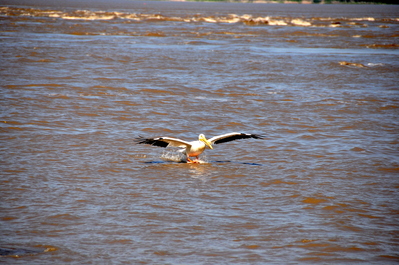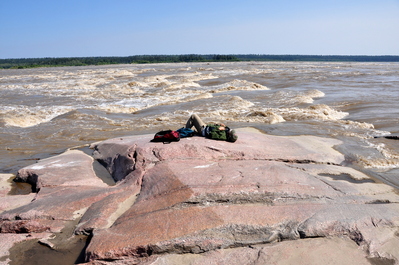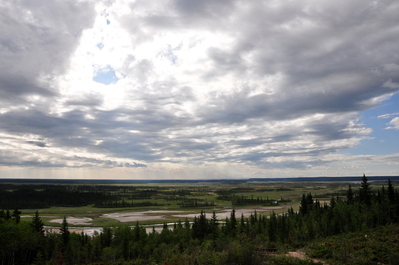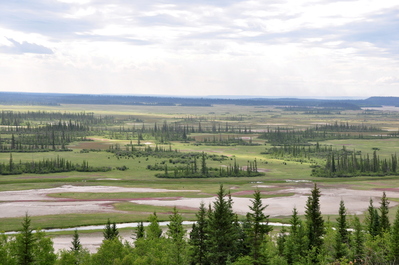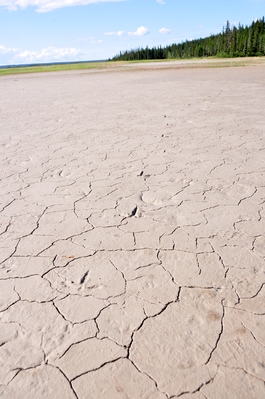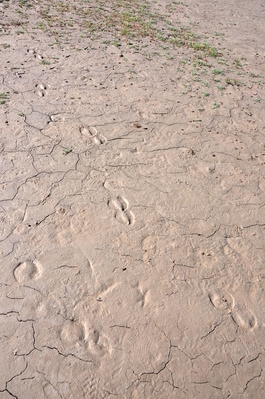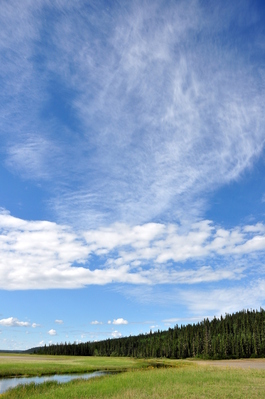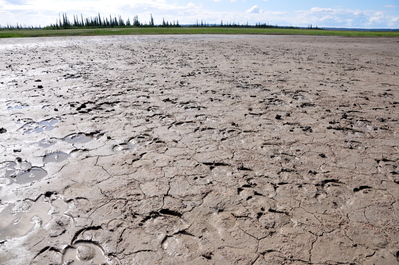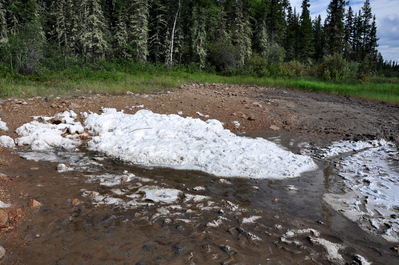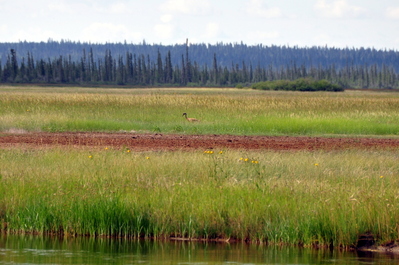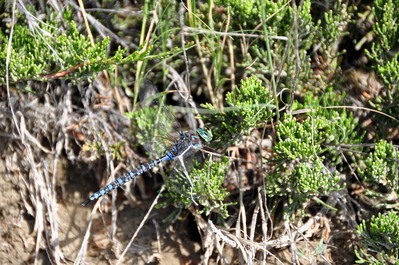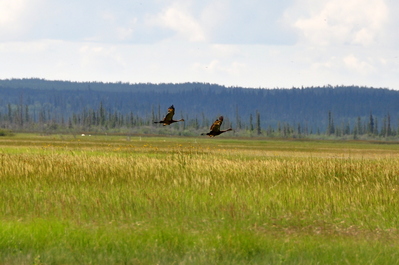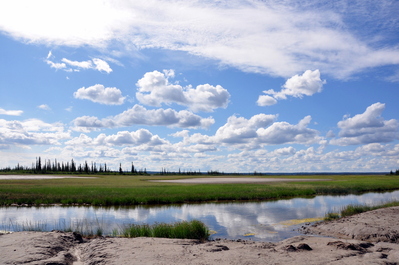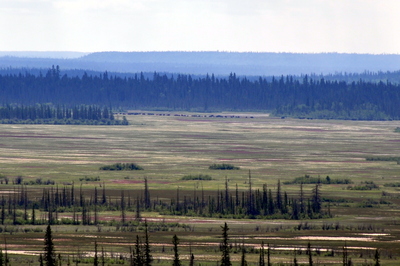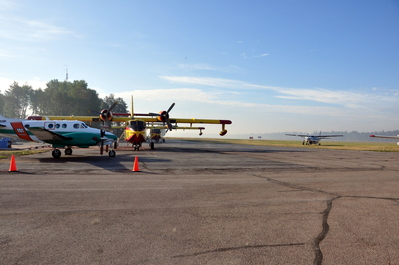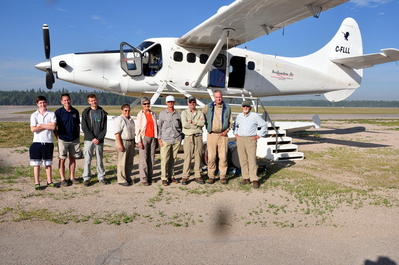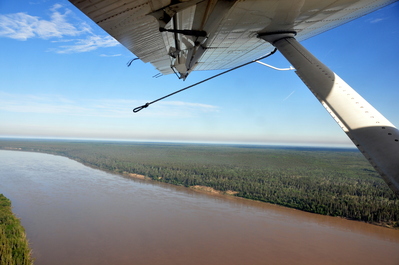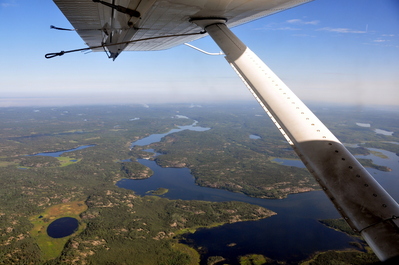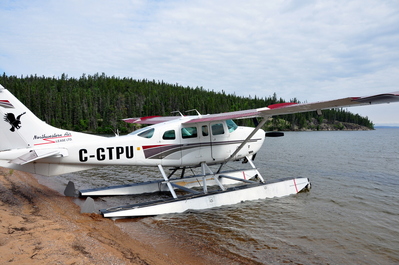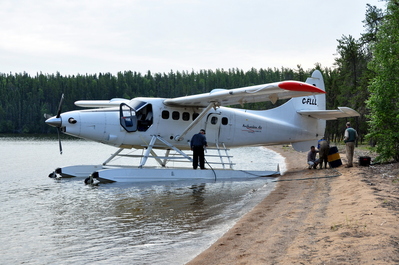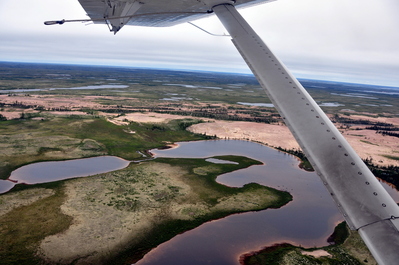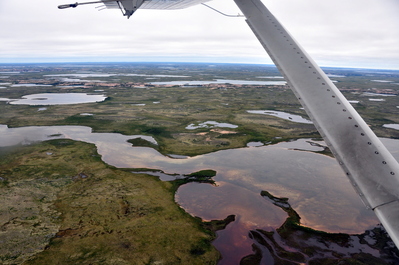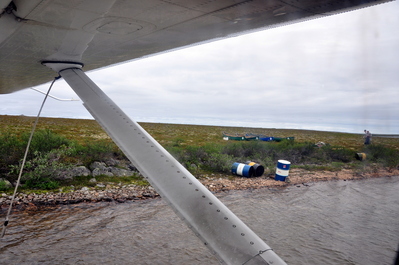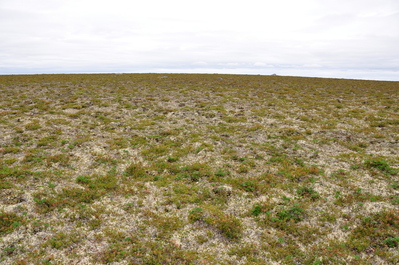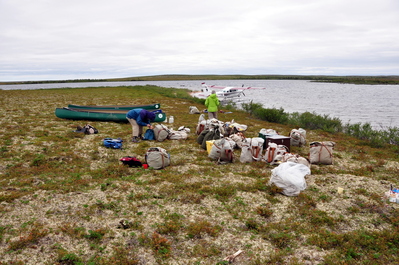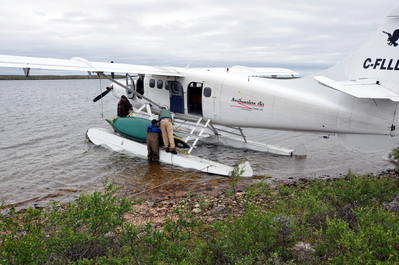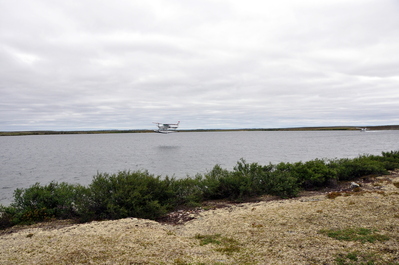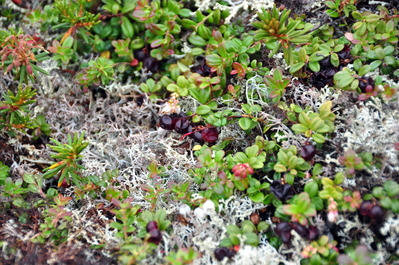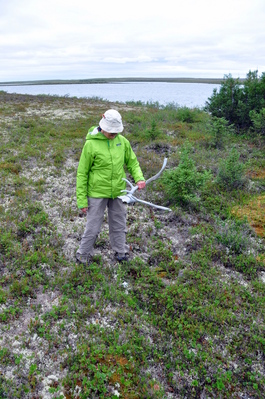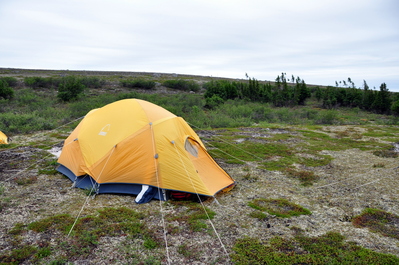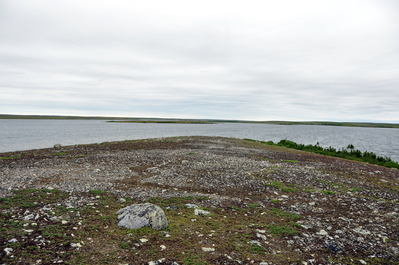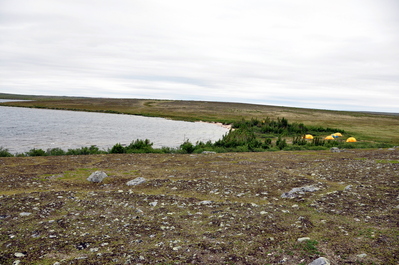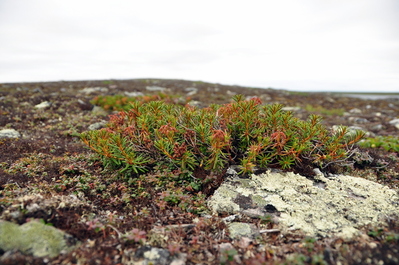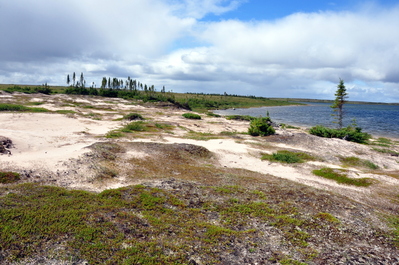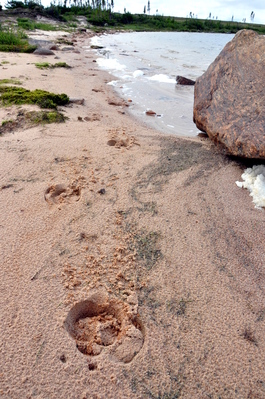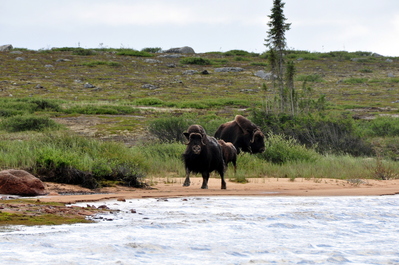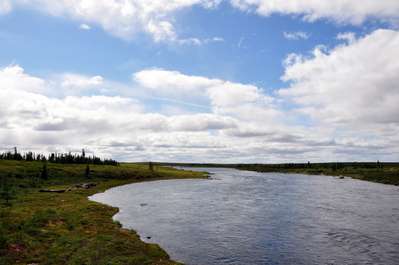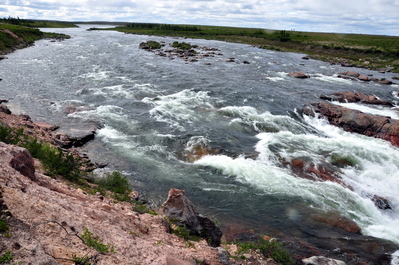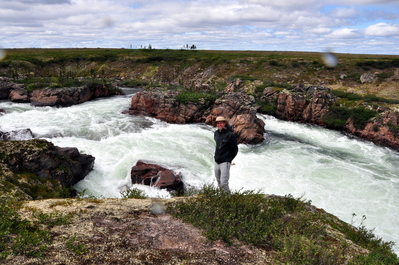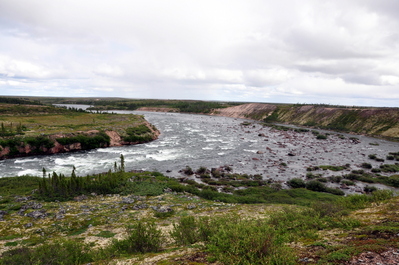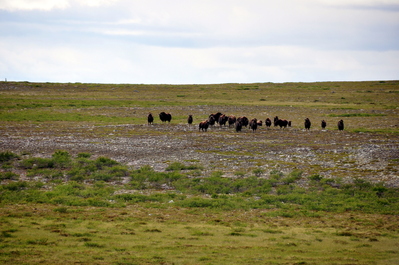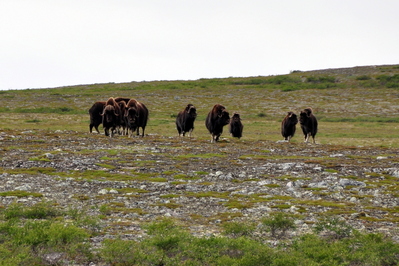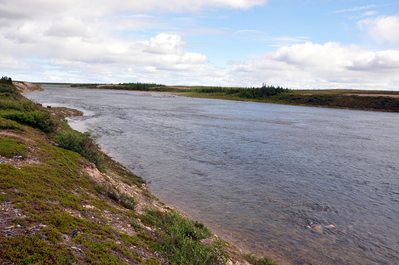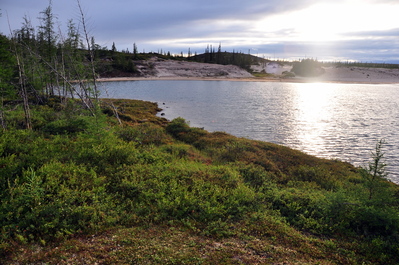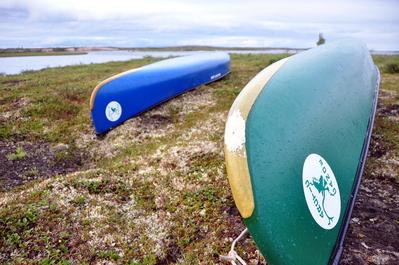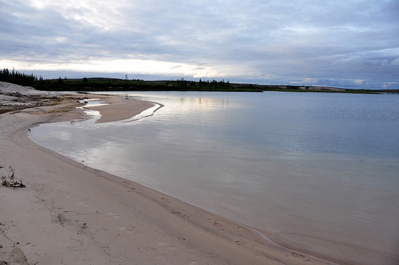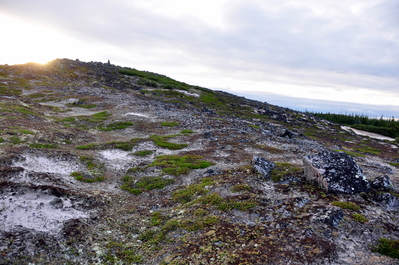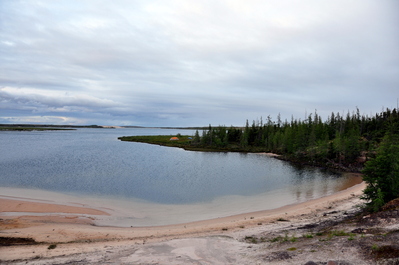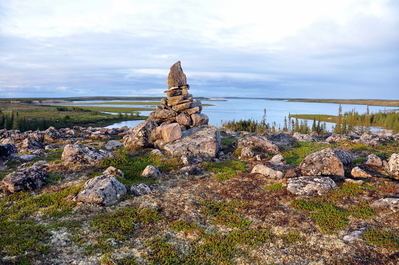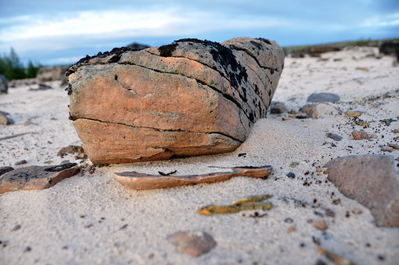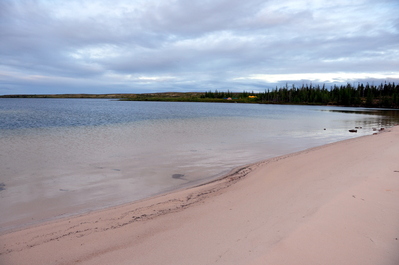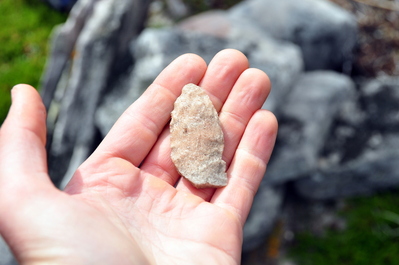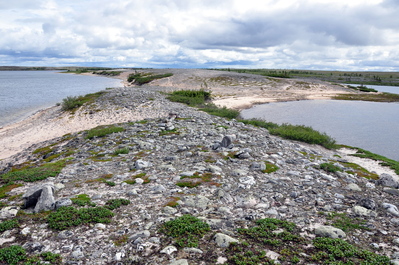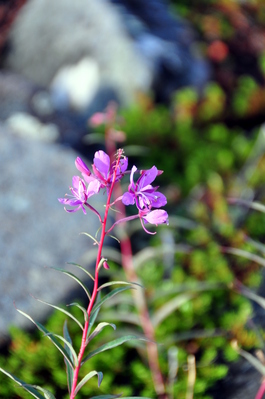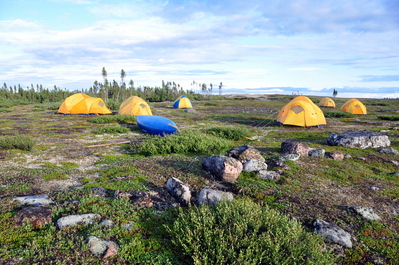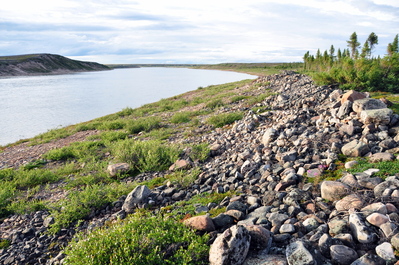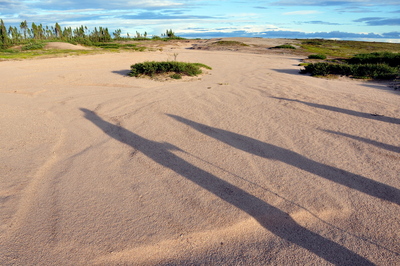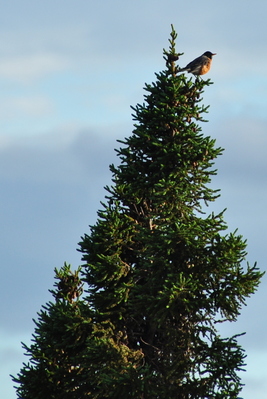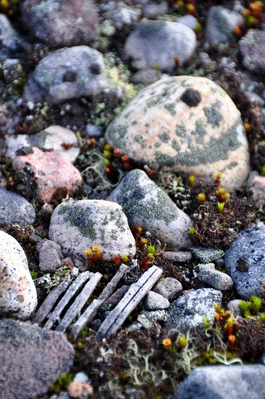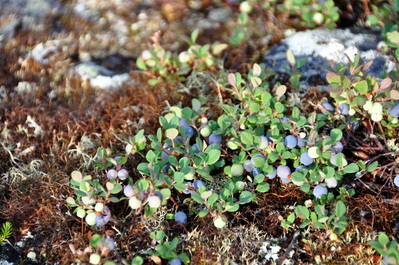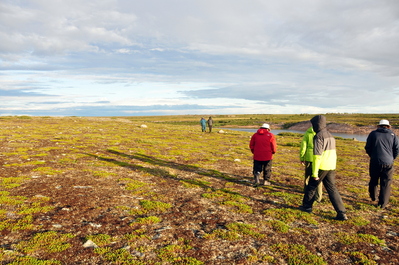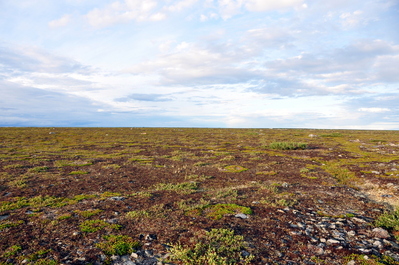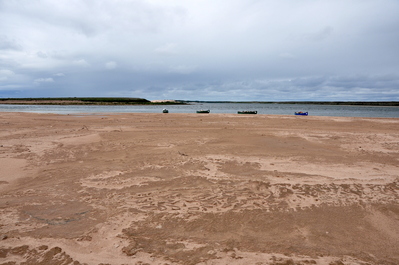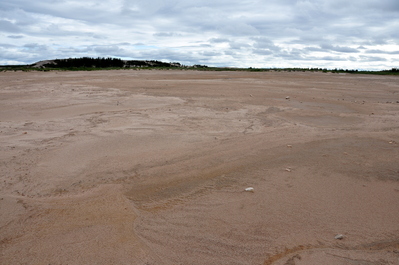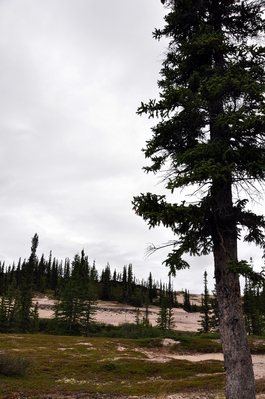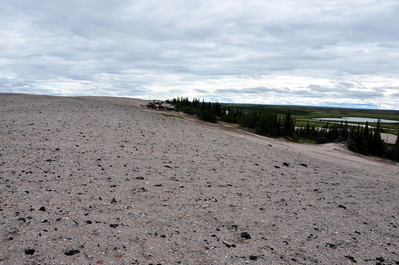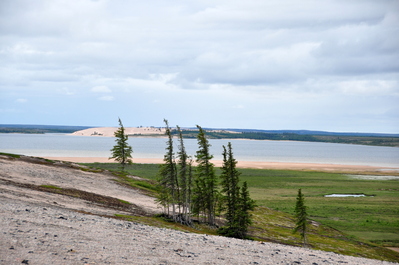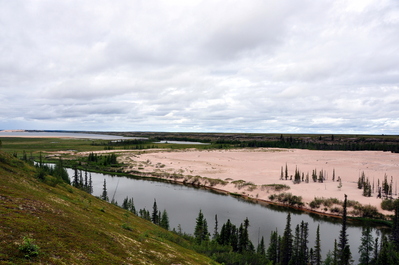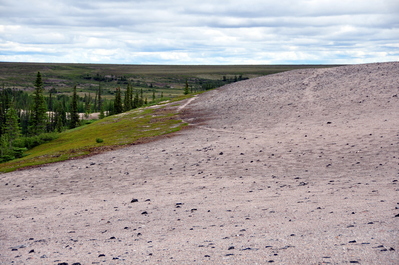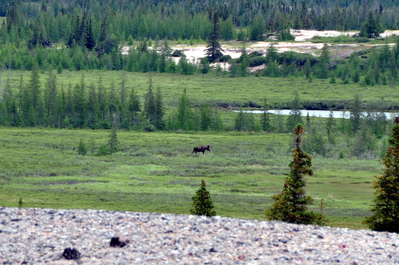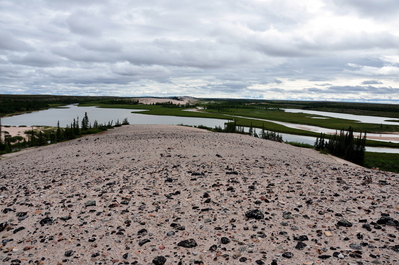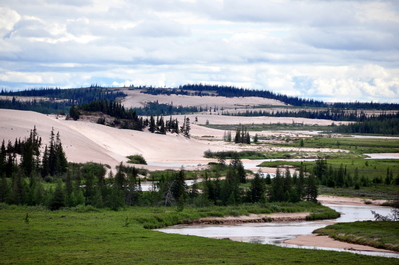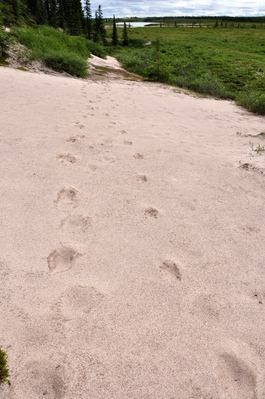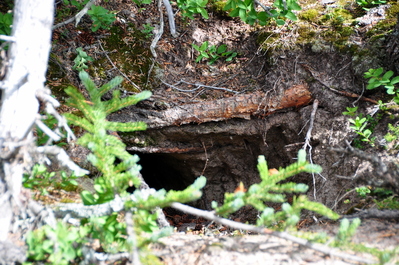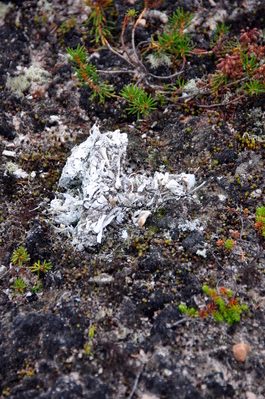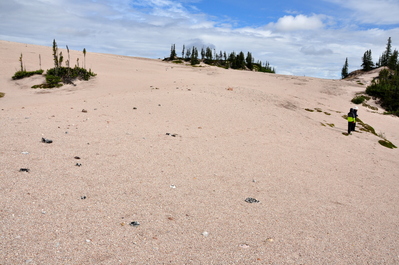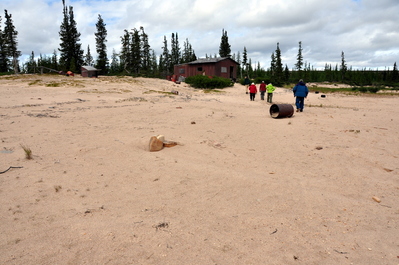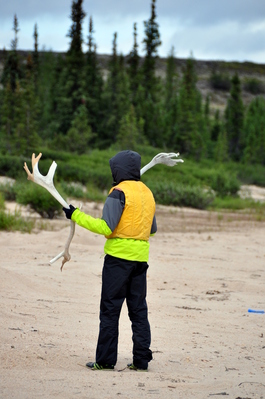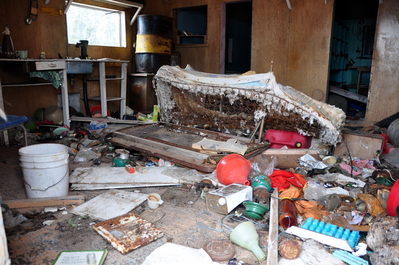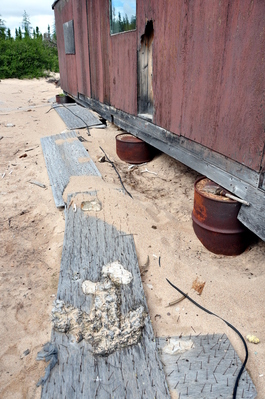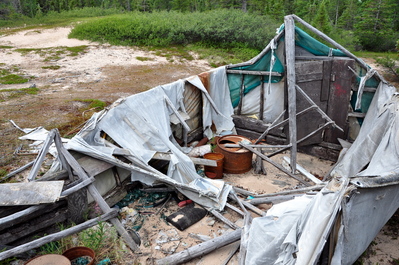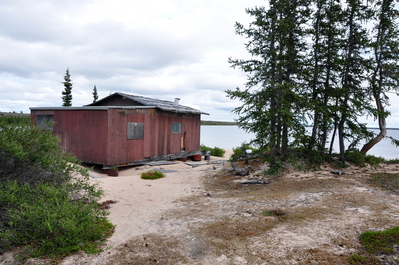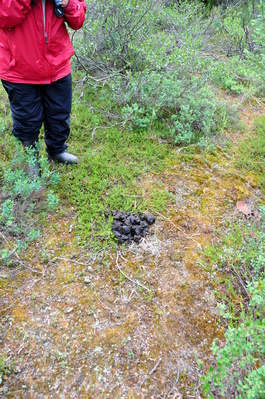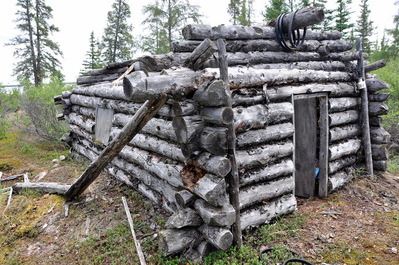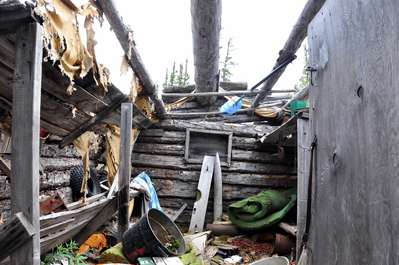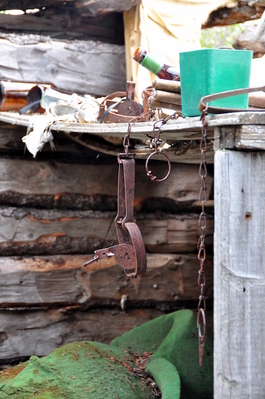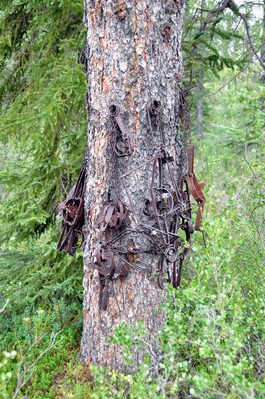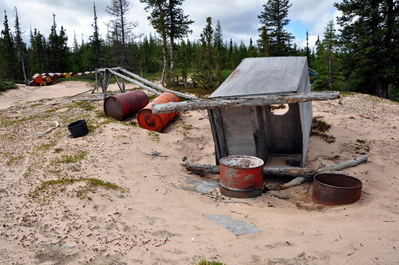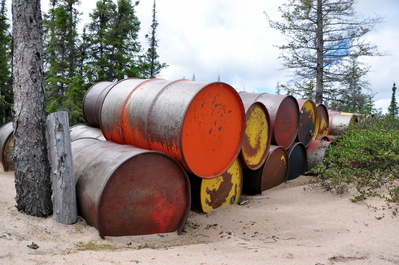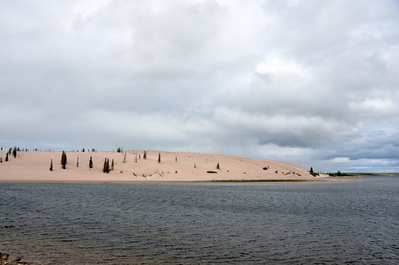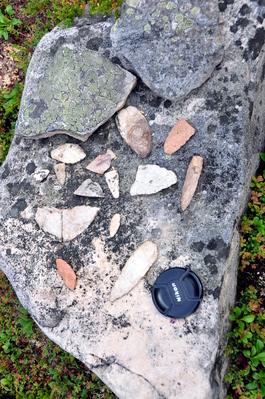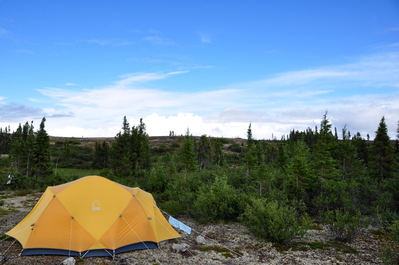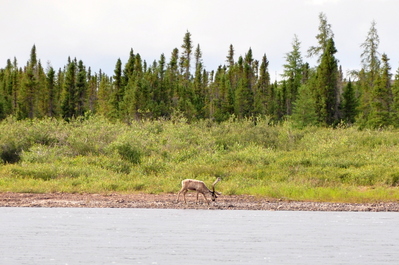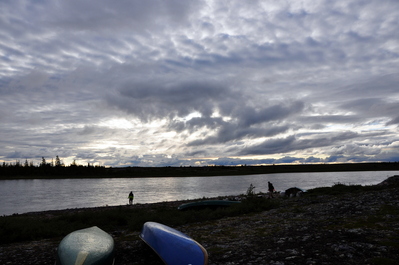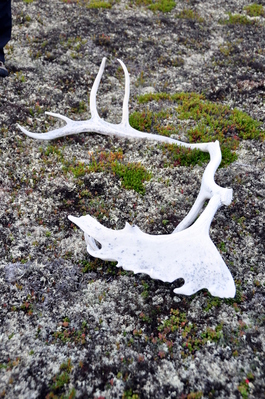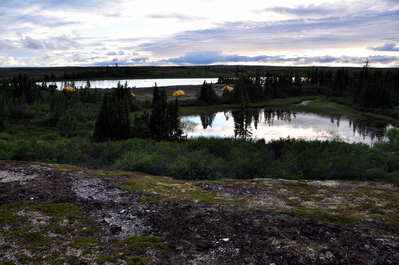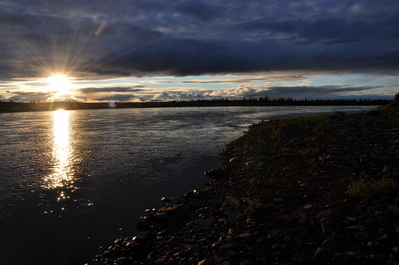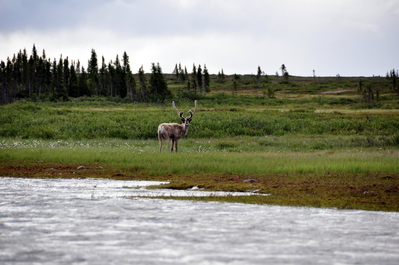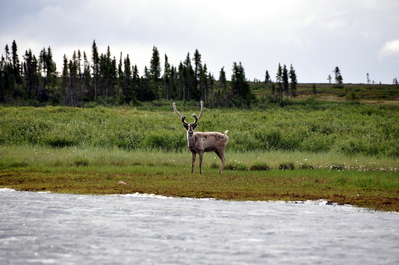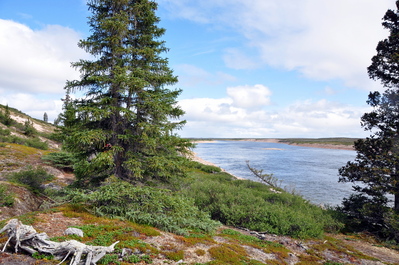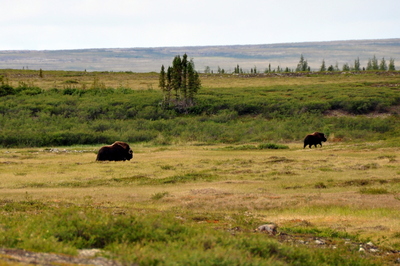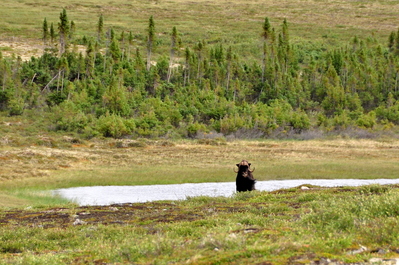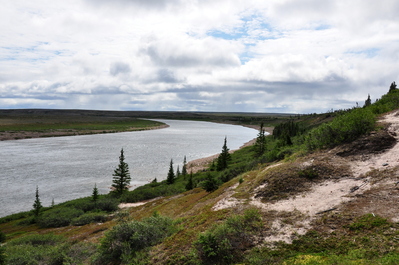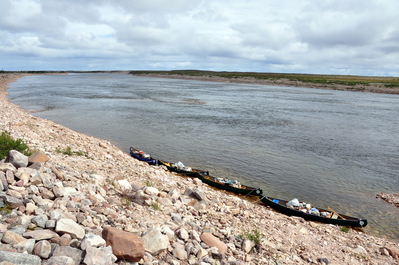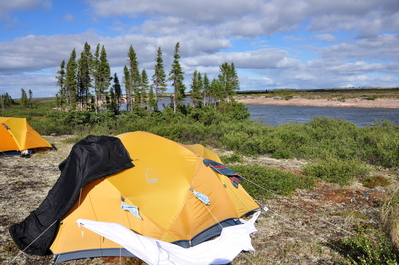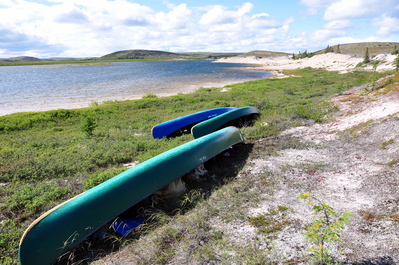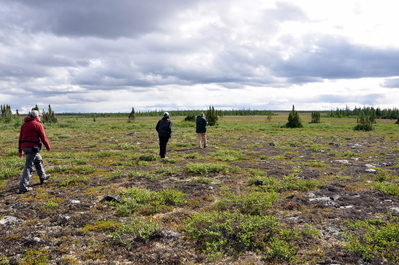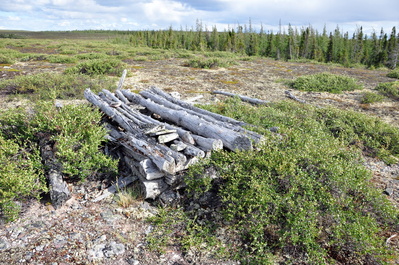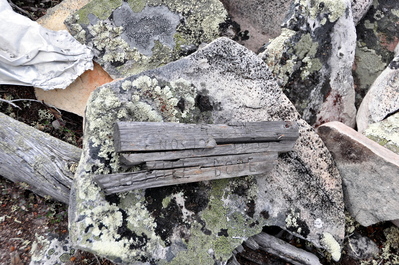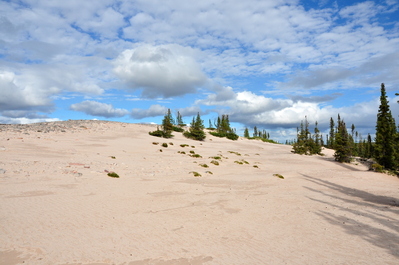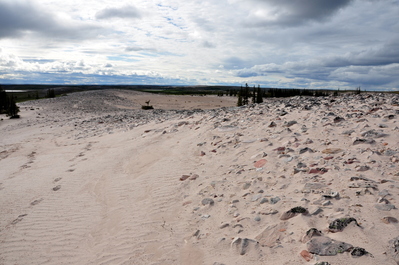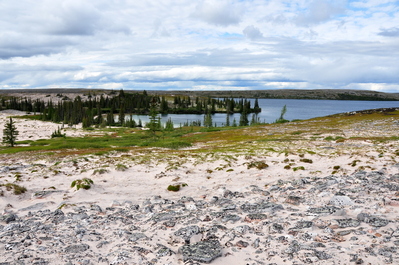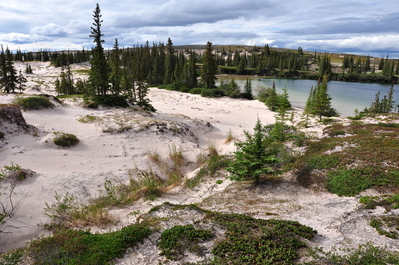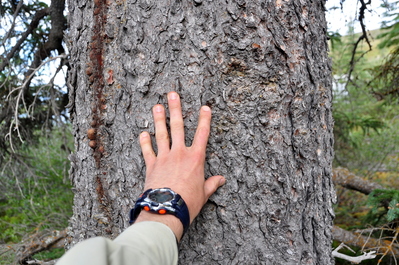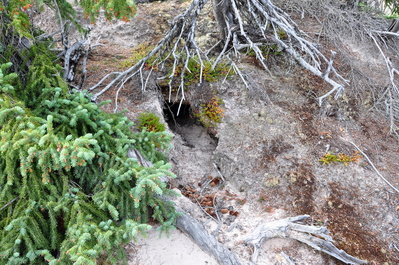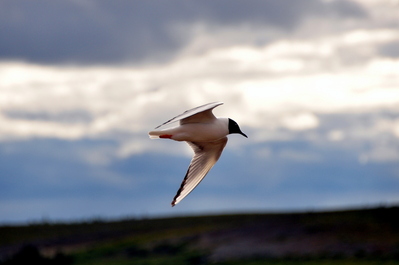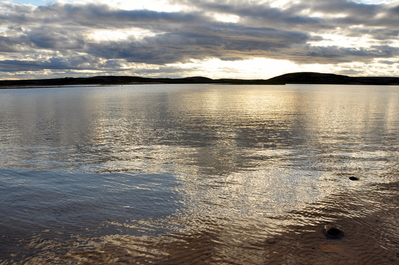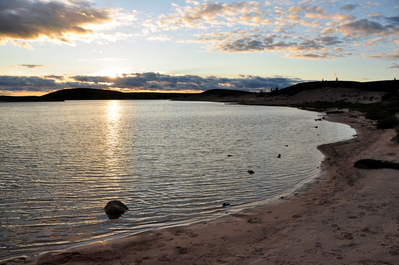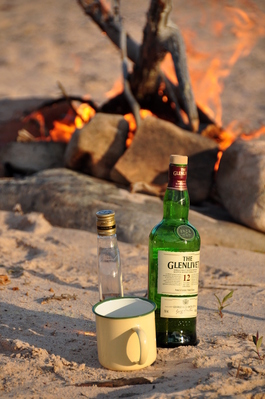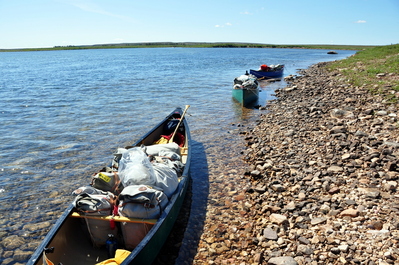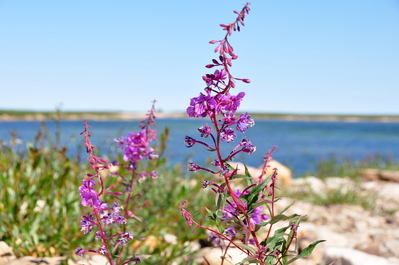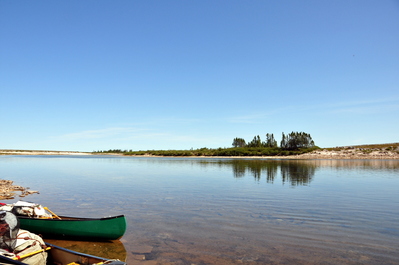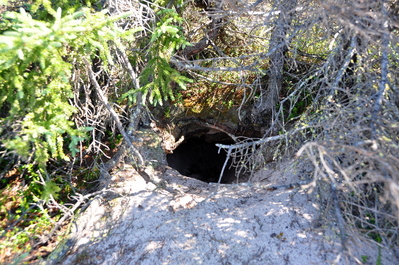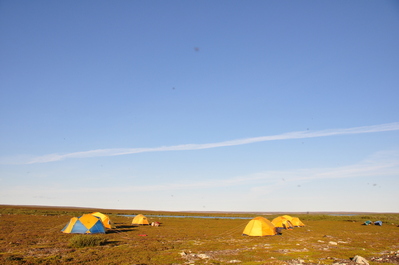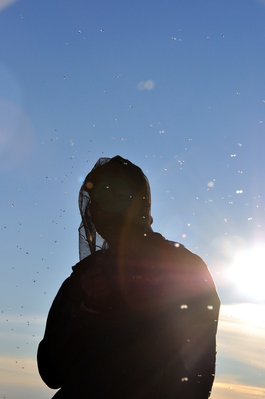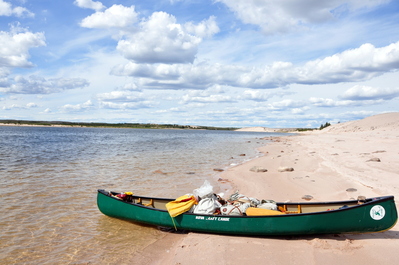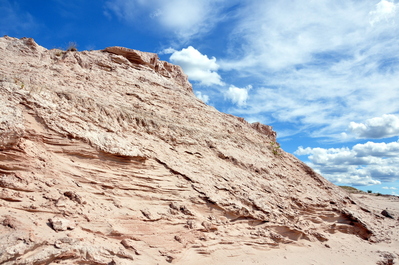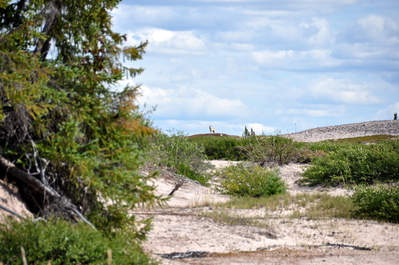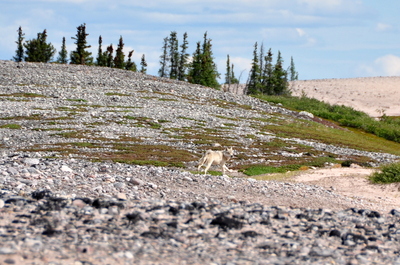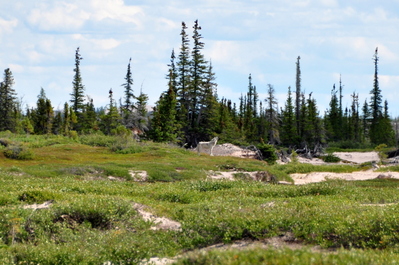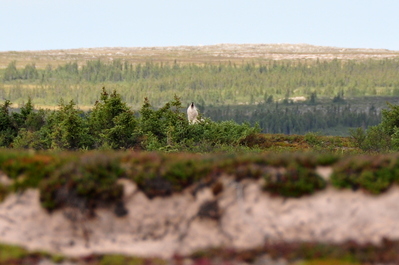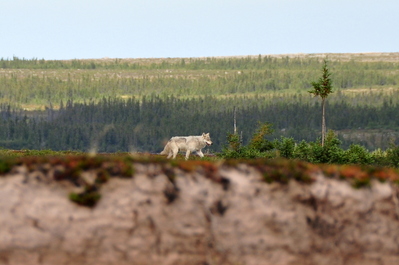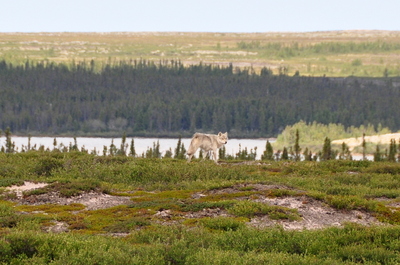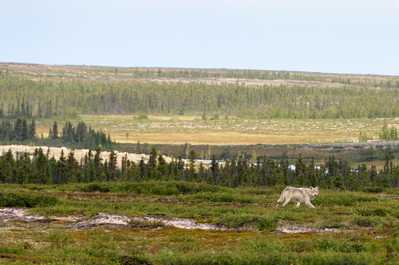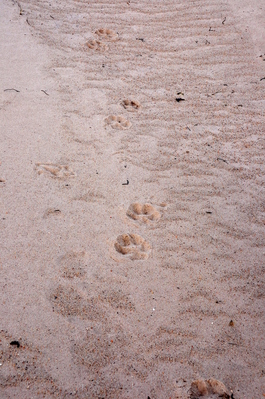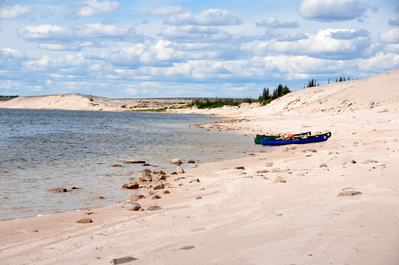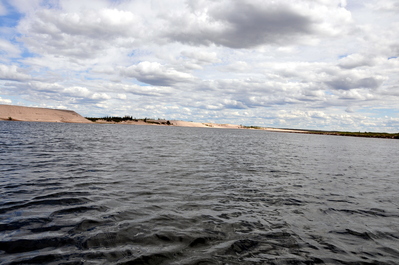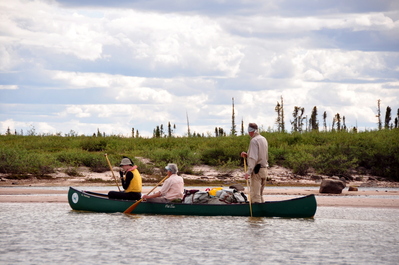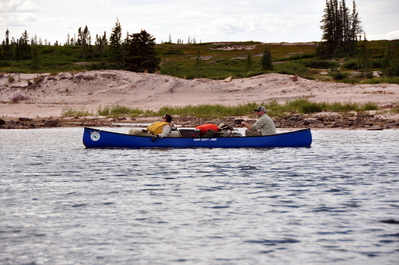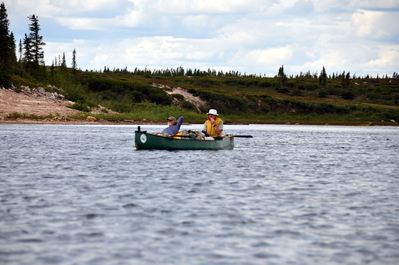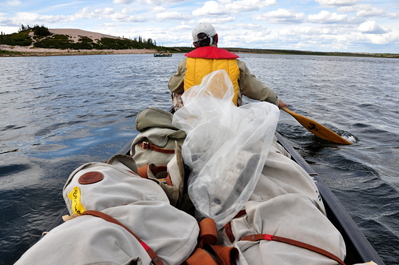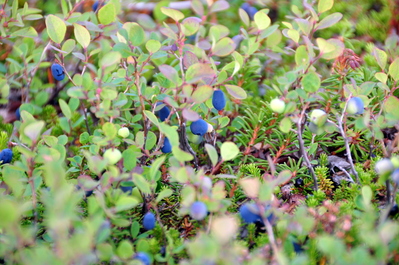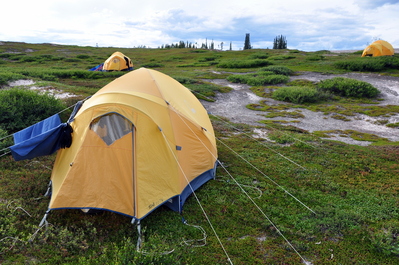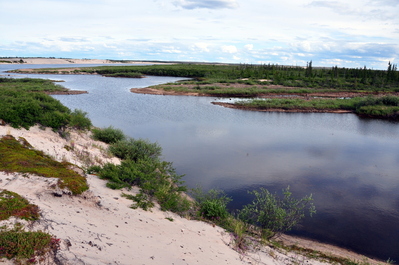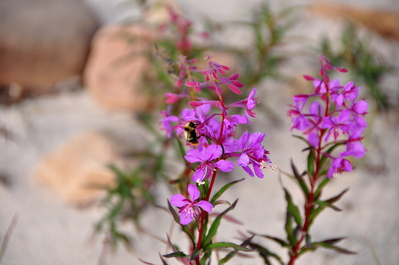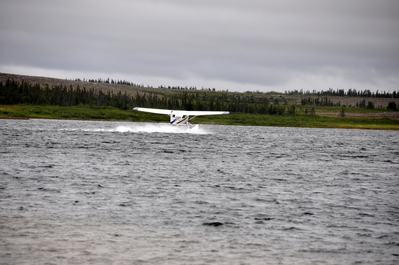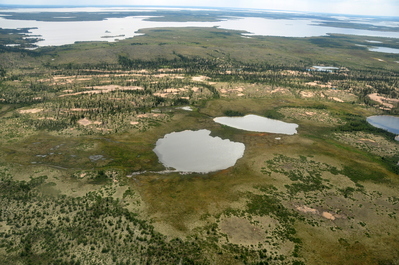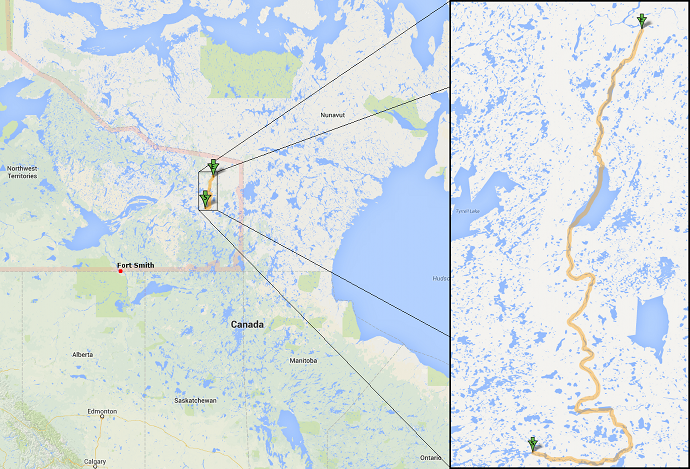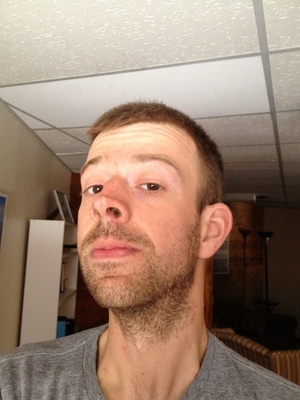At this point I'm going to break from the day-to-day account of the trip in order to describe the details of how the trip was run. Many parts of each day were the same, so rather than repeat myself I'm going to describe the average day here. I'll also provide details about gear and procedures that I found interesting. Some parts of this section may be boring if you don't care about camping and canoeing so feel free to skip ahead to the next day.
On Alex's trips the first day and last day generally involve no paddling (our trip being a rare exception). Weather permitting, every other day of the trip is a paddling day and enough time is allocated to make it fairly easy to reach the targetted end point with consistent effort from the group. On the first day of the trip most of the time is allocated to the flight in, unloading gear and a ninety minute lecture from Alex on how the trip is run. On the last day time is spent packing, disassembling the canoes for transport and travelling back to Fort Smith.
Paddling days all have the same basic format. Breakfast is at 8:05am and is either porridge or granola with milk (the milk is reconstituted from powder). There is juice, coffee and tea. Judy warned in advance that she found breakfast was not big enough to hold her until lunch so I brought a bag of mixed nuts and chocolate which I would snack on throughout the morning. We also often picked cranberries or blueberries to put in the porridge or granola.
After breakfast we'd pack up the camp with the goal of getting on the water by 9:15am. Then we would paddle for a little over an hour before taking a short bathroom break at some convenient location. Then more paddling until lunch which was normally at noon (often exactly at noon).
Lunch was always the same. Unlimited wasa crackers (large rye crackers) with a selection of toppings. Peanut butter, honey, many different jams. Various canned fish like salmon, tuna, sardines and oysters. Also canned ham and turkey. For dessert there would always be mixed nuts, dried fruit and chocolate. We'd also have some sort of juice made from juice crystals. To eat lunch we'd stop somewhere and just pull the lunch stuff out of the canoes. The only dishes we'd use were cups for the juice, a pot to mix the juice in, and knives for spreading the various toppings on crackers. It was a very efficient meal, and also very satisfying. The jams had their own custom made storage box in order to protect the glass containers (the only glass we brought on the trip). The juice flavour was different every day. Besides the standard expected flavours there were fun ones like cranberry, banana-orange-pineapple, passion fruit and peach. When lunch was done someone would quickly clean the dishes in the river and then we'd be back on the water. Often lunch was finished in less than forty-five minutes.
In the afternoon we'd paddle with the goal of reaching our next camping spot by 4pm including another short bathroom break at some point. Alex knows the river and surrounding area extremely well and over the years he's figured out where all the best spots to camp are. He'd often give us choices about how far we wanted to go when there was no safety difference between the options. For example, we'd take our afternoon break and he'd tell us we could either stay at the break spot or paddle another hour and a half to reach a better camp site further down the river. We always took the further option.
After reaching our camp site for the night the first order of business was to unload the canoes and drag them up out of the water. The winds can be strong on the tundra and it is important to secure the canoes as they can actually blow away. Alex has five canoes, giving a maximum trip size of nine guests plus himself. On our trip we only had eight guests plus Alex so we had an odd number of people. The canoe Alex paddles is a big 21' monster and so when there are an odd number of people he takes two guests in his canoe. Riding in the middle of a canoe is uncomfortable so we'd rotate paddling positions to give everyone a chance to take the crappy spot. In addition to the 21' canoe we had two 18' canoes and a 17' canoe. I spent most of the trip in the stern of the 17' canoe with a variety of partners, but I also took my turn in Alex's canoe. At camp, Alex used the 17' canoe balanced on its side as a windbreak for the stove and he used the 21' canoe as a shelter to keep stuff he was using dry.
Each canoe had a spare paddle lashed to the inside just below the thwarts. This was awesome as it meant that the spare paddles were always secure and never bouncing around or getting in the way. We never used them so it would have been annoying to have to keep moving them about on their own. At the bow and stern of the canoe was a long rope for tying up the canoe. The rope was kept neat with a strap of velcro. This worked really well because you could easily jump out of the canoe in fast water while simultaneously grabbing the rope. The velcro was strong enough to keep the rope tidy but weak enough that it would let go as you grabbed it. Whenever we stopped we tied up the canoes at both bow and stern. With the fast moving water you don't want to take chances. Each canoe also had a bailing bucket and sponge. At the end of each day Alex insisted that we use the sponge to wash out the inside of the canoe. This helps prolong the life of what must be one of the most expensive bits of equipment he maintains.
Almost all of the common gear and food was packed in Duluth bags just like our personal effects. Each bag was labelled with its contents and also colour-coded to match a particular canoe. This made it easy to repack the canoes each day without having to carefully figure out weight distributions every time. The bottoms of the bags would get wet in the canoe, so when we unloaded Alex was quite strict. We were absolutely forbidden to put the packs down on sand and when we got them up to the kitchen area we were to put them upside down so that the bottoms could dry. Of course each pack was lined with plastic to keep the contents dry.
Once unloaded, Alex would set up the kitchen and pitch his tent nearby. Meanwhile we'd set up our tents a little further off. One thing I found surprising was that we didn't do a whole lot to protect our food from animals. Alex would just leave all the food packs together near the garbage bag. The food packs would be sealed, but he'd leave the garbage only loosely tied. Then he'd attach a homemade alarm to the garbage bag (an airhorn with a string on the trigger). If anything disturbed the garbage it would set off the airhorn, waking Alex who'd then come out to scare off whatever was there. In general, most animals in the area have never seen people and so they don't associate camps with food. At no point was our food ever disturbed, the alarm never sounded.
Dinner each night was at 7:00pm. Most days everyone napped a bit beforehand. The meal always started with hot, delicious bannock bread and was followed by soup (different every day like the juice at lunch) and then some sort of main course. The main courses were always one pot meals, like pasta with meat and sauce or stew. Dessert alternated each day between pudding and freeze dried fruit (again, a different fruit/pudding every day). After dinner there was coffee, tea and hot chocolate and Alex would have his daily cigar.
Each night after dinner Alex would wash the dishes with soap and hot water. He also did all of the cooking. We often tried to offer our help but he always refused other than to let us occasionally fetch the water. There were never many dishes though as Alex has optimized the meals to be minimal. Everything could be eaten from a bowl with a spoon so there were no other types of dishes other than mugs for drinking. The only cooking utensils were pots, two special pans for the bannock (which he flipped with a flick of the wrist rather than a flipper) and a stirring stick (which he whittled himself some ten years previous). There were also knives for spreading the lunch food.
All of the dishes and cooking stuff was stored in a custom wood box. He had a specific place for everything and any attempts by us to help put stuff away resulted in Alex coming and redoing it all. The cooking box had the word "NO" written on the top of it to distinguish it from the other box on which was written "YES." We were allowed to go into the YES box but not the NO box. The YES box contained toilet paper, bug hats and the stuff for hot drinks like coffee. It was pretty funny how strict and organized it all was, but it only took a day to realize how much sense it made. His system produced ultra efficiencies in the practical matters meaning we had more time to explore and seek out fantastic scenery and animals.
All cooking was done on a double burner propane stove. We brought three, eleven pound propane cylinders (same height as a standard BBQ cylinder, but about half the diameter). We also brought a second stove, but that was just a backup in case something happend to the first. Alex used to cook on fire, but eventually switched to stoves for convenience (at the expense of extra weight). We were allowed to have recreational campfires in the evenings if we wanted, but it was up to us to create and care for them. Alex also required that if we did have a fire, we make it below the high water line so that the remains would be swept away over the winter. He loves the purity of the land and does not want to see evidence of previous visits the next time he comes through.
All water for drinking and cooking came straight out of the river with no purification or boiling. The water was very clean and tasted wonderful. I've never had better water in my life and I suspect I never will again. While paddling you could just bring your mug in the canoe and dip it over the edge whenever you got thirsty. It was amazing!
For bathroom stuff this was definitely a dig-a-hole-and-bury-it situation. Except that digging a hole in that terrain was tricky and often you had to walk quite far from camp to get some privacy (due to the wide open flat nature of the landscape). The easiest way to dig a hole was to find a big rock and pry it up out of the ground. This was much easier than it sounds because the freeze/thaw cycle is pretty harsh on the tundra. No rocks are ever stable for long so it was pretty simple to pull large, deeply buried rocks up out of the ground. Pulling up a rock gets you a perfect hole and then you just put the rock back to cover it. Toilet paper takes about two years to break down so we were instructed to be sure to cover it well.
Alex provided the tents for everyone, and a surprise luxury was that everyone was given their own tent. I guess this helps prevent problems if there are personality issues since everyone has their own private space to retreat to. The tents were quite nice and like everything Alex had a pretty complex system for them. The poles were kept separate from the tents but each was labelled so you'd always get the same set. The pegs were kept in the tent bag, but always on the outside so that Alex could double check everyone had packed their pegs as he packed the tents up in the morning. The separation of tents from poles was to maximize packing efficiency of the tents in the Duluth packs. Each tent was from Sierra Designs and was symmetrical front-to-back. So there were two doors which Alex had labelled "front" and "back." He requested that we always pitch the tent such that the door we'd primarily use would always be the "front" door. On his next trip he'll request that his clients make the primary door the "back" door. This way the zippers on the tent doors get even wear which helps prolong their life. Most of the tents were 3-person tents, although there were also three 5-person tents one of which was shared by Mike and his son. Even the small ones were nice and spacious for just one person.
Alex runs all of his trips with a very absolute set of guidelines. The first priority is safety. Nothing else can override that. After safety comes respect for the land (i.e. no trace camping). Last is fun and enjoyment. He wants all his clients to have a good time, but never at the expense of the first two priorities. The trips all take place very far from help. Furthermore, the float planes cannot land just anywhere and cannot land at all in bad weather. If something happens it could be more than a day before help arrives and the group may have to move to a better spot miles away to get help at all. Alex had a satellite phone for communicating with Fort Smith and also a two-way radio for communicating with passing long distance aircraft. These items are only used in emergencies (with the exception of the phone which is also used on the last day to coordinate pickup).
On the topic of safety Alex made a point of mentioning the three things most likely to kill a person on the trip (not that he's ever lost anyone before). Number one is hypothermia. Number two is a bear attack, although he did say that was exceedingly unlikely. Most grizzly bears are terrified of people and will stay far away if they smell you. Even if they do charge, it is normally just to intimidate and so they'll stop before attacking. In the event of an attack, Alex said to curl up and play dead, but that it would probably do no good and you'd be for real dead soon. Black bears have also moved north with the warming climate, but if they attack the best bet is to fight back. The third thing that can kill a person here is wolf droppings. The wolves and the caribou share a parasitic worm that does not harm them, but in a person will often move into the brain and kill the host. Wolf droppings are full of the parasite and if you touch them it is very easy to accidentally ingest the worms as it is hard to adequately wash your hands. Alex advised not to touch wolf poo.
Alex was a super-badass paddler. He independently taught himself the Canadian Stroke which is difficult to master, but extremely efficient and powerful. He is also just as happy paddling from a standing position as sitting or kneeling. Alex would regularly just stand straight up in his canoe to check out the river ahead and plan his path. This was useful for the many rapids we ran over the course of the trip. Most were small, but Alex always stopped before them to get all the canoes close together. Then we'd follow him safely through. I soon learned that, rapids or not, it was always best to follow Alex closely as he always seemed to know the best way down the river. He was always catching the current just right and as a result making excellent speed with minimal effort.
Before the trip I already owned a fair amount of camping gear, but I definitely upgraded some of my supplies in preparation. I'd like to call out several items that paid for themselves a million times over. First, I bought new hiking boots for the trip. They were expensive, but they are sturdy and made with GoreTex so they're basically waterproof. Alex recommended we all bring two pairs of boots, one tall pair for getting in and out of the canoe with and another "dry" pair for use around camp. I couldn't justify buying two pairs of boots and so I went with my normal neoprene water shoes for in the canoe. In retrospect I wish I'd found a cheap pair of tall boots for the canoe because the weather was colder than expected and my feet were pretty chilly some days.
Fortunately for my feet, wool is awesome even when wet. I bought five pairs of nice wool socks for the trip and quickly decided to sacrifice one pair to be my "wet" pair for wearing inside my water shoes. Even soaked these did a great job keeping my feet warm. Also in wool, I had two sets of merino wool base layers plus a merino wool sweater. On the colder days these things were fantastic and they were also great while paddling because merino keeps you warm even if you sweat into it and it takes a really long time to get smelly. Despite wearing the same base-layer every day it was not overly rank when I returned to Fort Smith. For sleeping I used my other set of base layer items and added a merino wool balaclava. It's always a good idea to have something to cover your head for sleeping outside, but a balaclava works best because it doesn't accidentally slip off in the middle of the night. The final nice thing about all this wool stuff, particularly the merino, is that it is super light and packs up really small.
For my outer layer, I got a new PacLite GoreTex shell from Marmot. I found it cheap at the Europe Bound outlet store and it was amazing. Rain never got through and it made an effective windbreaker while still being quite breathable. I picked up (non-GoreTex) Marmot rainpants as well and they worked great too.
Another thing I was very happy to have was a pair of paddling gloves. These were made of neoprene with rubber grips and they kept my hands warm on the colder days while also protecting from blisters. I can't believe how much I appreciated them by the end of the trip.
Finally, my bug shirt was amazing. We didn't have bugs until the last couple days, but when they came they came with a vengeance. I think I would have literally gone insane without the protection from the bug shirt.
On the failure side of personal gear was my sleeping bag. It was only a summer bag, but it should have been fine for the expected weather. Unfortunately I ignored Alex's statement that the weather can be unpredictable. It got really cold a couple nights (almost to 0C) and I had to keep adding more clothes inside my sleeping bag to keep warm. I should have sprung for a warmer sleeping bag but I didn't want to buy a new sleeping bag when I so rarely camp in colder weather. Fortunately I did buy a sleeping bag liner which helped a little.
Wow, that was a long aside. Hopefully not too boring though. Now back to the day-to-day journal.
